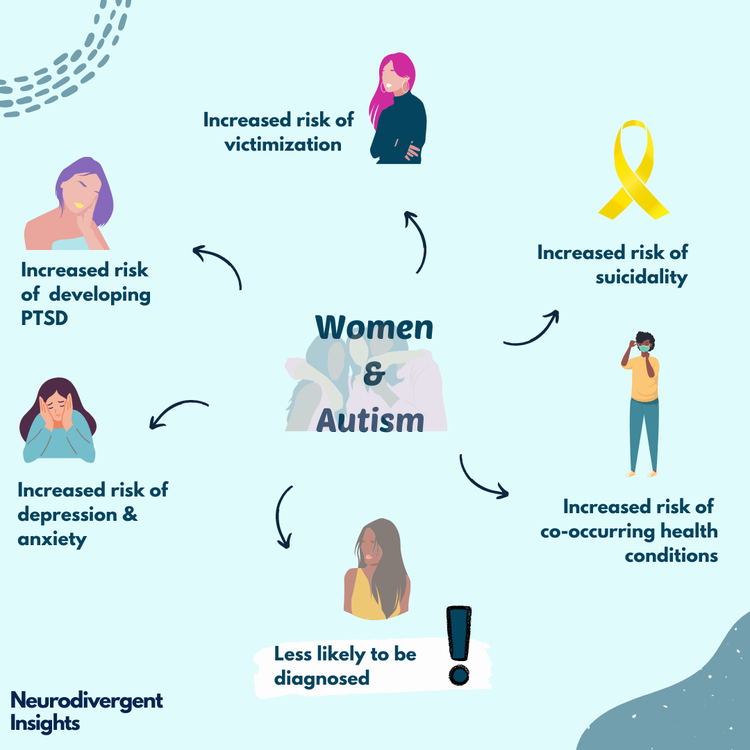Exploring Autism: Methods for Reliable Interaction and Interaction
Reliable interaction and interaction with people on the autism range demand a comprehensive understanding of their unique needs and preferences. Techniques such as employing clear language, utilizing visual supports, and fostering consistent regimens can significantly enhance engagement and reduce anxiety. Moreover, identifying the relevance of non-verbal signs and shared passions leads the method for meaningful connections. However, the complexities of these approaches disclose additional factors to consider that warrant exploration, particularly in just how they can be adjusted to diverse contexts and specific experiences. What might these adjustments appear like in practice?
Understanding Autism Spectrum Problem
Autism Spectrum Problem (ASD) encompasses an array of neurodevelopmental conditions defined by obstacles in social interaction, interaction, and repetitive habits. The term "range" reflects the diverse indications and varying degrees of intensity experienced by individuals with ASD. While some may show significant disabilities, others might display high-functioning attributes, enabling higher freedom in day-to-day live.
The beginning of ASD typically happens in early youth, with indicators often identifiable by age 2. Very early indications may include delayed speech advancement, minimal eye call, and difficulties in understanding social hints. The accurate etiology of ASD stays unclear, study recommends a mix of environmental and hereditary aspects plays a vital function in its growth.
As an outcome, treatments and support customized to private needs are crucial for promoting communication and social abilities. Acknowledging the intricacy of ASD is crucial for promoting recognition, acceptance, and reliable techniques that facilitate meaningful communications with individuals on the range.

Significance of Clear Communication
Reliable interaction is essential for cultivating understanding and link, especially for individuals with Autism Range Disorder (ASD) Clear interaction not just assists in social interactions but additionally improves the individual's ability to share their requirements, thoughts, and feelings. For people with ASD, the subtleties of language can typically be challenging; consequently, using distinct and simple language is vital.
Moreover, clear interaction helps in reducing stress and stress and anxiety that might develop from misunderstandings. When messages are communicated in a direct and regular manner, individuals with ASD are much better geared up to analyze info properly, which can considerably boost their social interaction and engagement in various setups.
Establishing regimens and using visual assistances can further boost clear interaction. These techniques give individuals with predictable structures that assist comprehension and retention of info. In addition, actively being and paying attention patient during interactions advertises an encouraging environment where individuals with ASD really feel valued and recognized.
Ultimately, prioritizing clear communication not just encourages people with ASD but likewise promotes even more purposeful links with their peers, caregivers, and the larger neighborhood, leading the means for comprehensive interactions and collaborative connections. - autism
Non-Verbal Interaction Strategies
Interaction extends beyond words, and for individuals with Autism Spectrum Disorder (ASD), non-verbal cues play a significant function in interactions. Non-verbal communication methods can consist of faces, gestures, body language, and eye contact, all of which work as vital components for conveying emotions and intentions.
Recognizing and analyzing these non-verbal signals can boost communications with people with ASD. As an example, a warm smile or open posture can create an inviting ambience, urging interaction. Using aesthetic help-- such as picture cards or symbols-- can link communication gaps and aid communicate messages much more effectively.
It is additionally crucial to be mindful of individual area, as individuals with ASD might have different convenience degrees concerning proximity. Observing their responses to physical closeness can educate proper adjustments.

Developing Encouraging Atmospheres
Creating a supportive environment is critical for promoting positive communications and improving the well-being of people with Autism Spectrum Problem (ASD) Such atmospheres can considerably reduce anxiousness and create a feeling of security, allowing people to express themselves a lot more freely.
To attain this, it is necessary to consider sensory level of sensitivities that individuals with ASD might experience. Modifying the physical room to consist of soft lights, very little history noise, next and comfy seating can produce a calming environment. Additionally, utilizing regular routines and clear aesthetic schedules can assist people anticipate shifts and reduce uncertainty, more promoting comfort.
Social rooms should be structured to lessen frustrating stimuli while supplying opportunities for interaction in recommended activities. Assisting in locations designated for peaceful time can likewise act as a refuge during minutes of stress. Importantly, integrating components of choice empowers individuals, enabling them to work out firm in their environment.

Urging Social Communications
Fostering social interactions amongst individuals with Autism Range Condition (ASD) calls for intentional approaches that prioritize convenience and interaction. Establishing predictable regimens can help in reducing stress and anxiety, making social setups more friendly. Developing structured atmospheres with specified responsibilities and functions allows individuals to involve without the frustrating pressure of unstructured social characteristics.
Incorporating rate of interests and toughness into social activities can offer as a catalyst find out this here for interaction. Organizing group activities around shared pastimes or subjects of attraction can help with natural discussions and links. Additionally, utilizing visual supports, such as pictorial schedules or social scripts, can help in recognizing social cues and expectations.
Modeling suitable social habits is critical - autism. Adults and peers should demonstrate effective communication techniques, including active listening and turn-taking. Role-playing situations can likewise provide a safe explanation space for individuals to practice these skills
Finally, promoting peer connections via comprehensive techniques is crucial. Urging inclusive playdates or team getaways can produce chances for socialization in a comfortable setting. By implementing these methods, instructors and caregivers can dramatically improve social interactions for people with ASD, advertising their general social development and health.
Verdict
To conclude, effective interaction and interaction approaches are essential for sustaining people with Autism Spectrum Condition. Emphasizing clear language, including non-verbal cues, and establishing foreseeable regimens dramatically boost engagement and reduce anxiousness. Developing encouraging settings cultivates risk-free social communications, while encouraging shared passions promotes significant connections. Inevitably, these approaches empower individuals with autism to browse social landscapes, advertising their overall wellness and making it possible for the development of long-term relationships.
Efficient communication and interaction with individuals on the autism spectrum require a detailed understanding of their one-of-a-kind demands and choices. Clear interaction not only facilitates social interactions but also enhances the individual's ability to express their ideas, feelings, and requirements.Cultivating social communications amongst people with Autism Spectrum Disorder (ASD) requires intentional strategies that prioritize comfort and engagement. By implementing these caretakers, instructors and methods can dramatically boost social interactions for individuals with ASD, advertising their general social development and health.
In final thought, effective interaction and interaction strategies are essential for sustaining individuals with Autism Range Condition.